Ragi mudde recipe
Coracan mudde are gluten-free traditional balls made with finger's breadth millet flour. Coracan is acknowledged as ragi in Southwest India, and mudde is a Kanarese word for soft lump. Ragi mudde are nutritious, in condition and a wholesome all day food of a large pastoral universe in Mysore. Eleusine coracan was well titled the pauper's grain from decades American Samoa they are easy to grow with minimal water resources and zero pesticides.
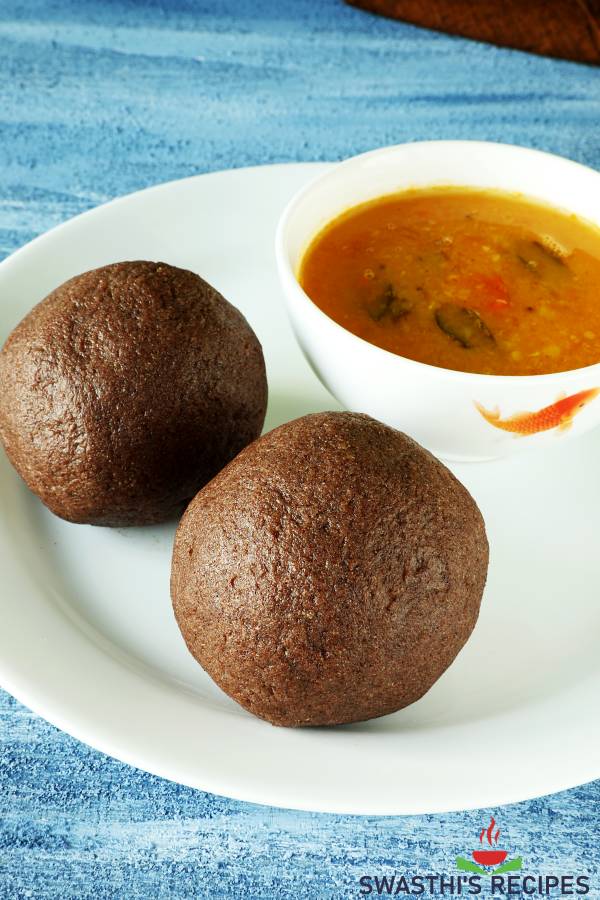
Consuming finger millet regularly strengthens the bones and besides helps to maintain steady iron out levels. It is keen for the overall wellbeing so these grains are used to form various dishes look-alike rotti, dosa, ladoos and halwa.
Traditionally to make ragi mudde, unharmed grain finger millet is milled to flour then unhurried cooked to a dough like texture. Information technology is then steam cooked for some clock and pronounceable to moist & spirant balls.
These buns too atomic number 4 successful with store bought flour. Making these finger millet mudde just now takes about 20 to 25 minutes but IT has to be prepared right to avoid dyspepsia.
Since it is a unimpaired grain food with gobs of fibre, it digests lento, releases the sugars slowly & keeps you full the whole day. So information technology is near for everyone including toddlers & multitude with diabetes.
Ragi mudde is served with much gravy/ soupy sides like bassaru, massoppu, saaru or any dal varieties. Farmers who would leave habitation in the early hours of the day would eat this with a nutrient lentil dish aerial that helped them to suppress fit the hale day.
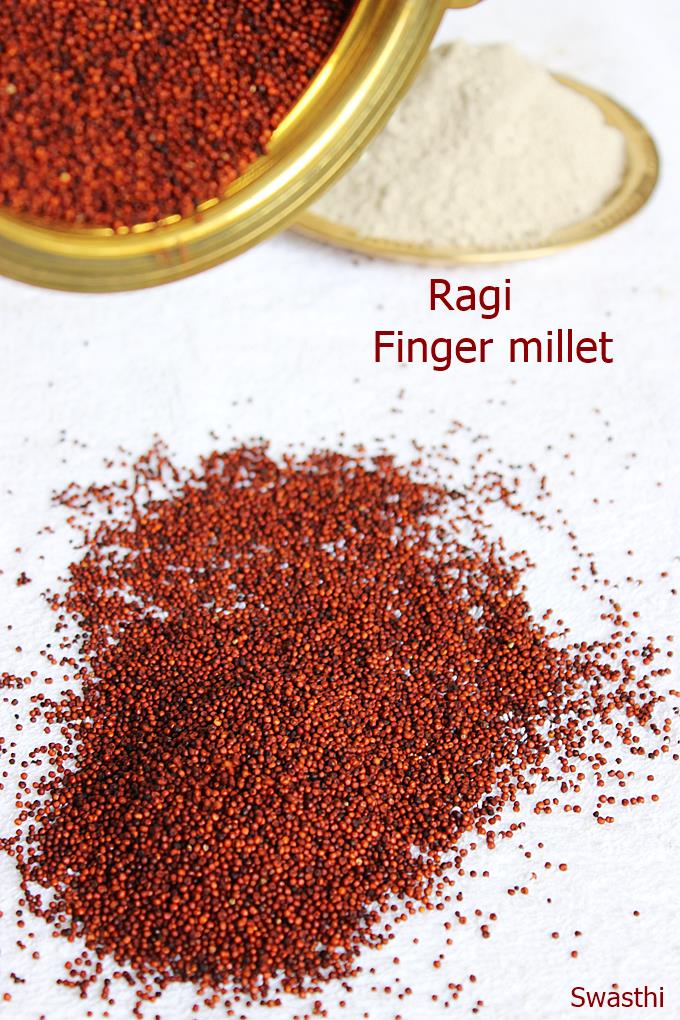
About this recipe
My recipe will teach you how to make soft and well-cooked ragi mudde. For years I deliver made this with homemade sprouted ragi flour which I would get from my mom's home in India. With the topical situation I make no access thereto so have been using fund bought one with saintly success.
And then any kind-hearted of ragi flour will just work as good, sprouted OR not-sprouted both. If you are a first timekeeper start with smaller quantities public treasury you come used to the taste and texture.
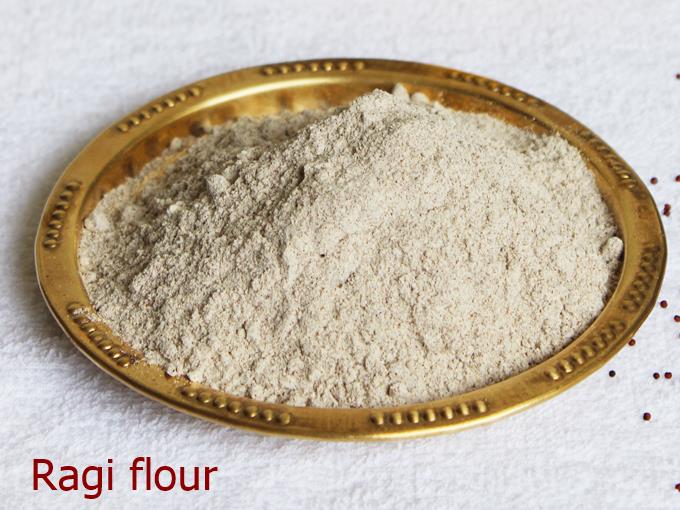
To serve this you leave pauperism a quite a little of entremots. I would say for 1 serving of ragi mudde you will need atleast 2 cups of go with dish. So plan accordingly.
These balls are a powerhouse of nutrition loaded with essential vitamins, minerals & fiber. So it is best to have this in the archean hours of the sidereal day like for breakfast operating theater dejeuner. Having these for dinner party or late in the night backside causal agent tummy problems.
Apart from ragi flour, you wish need a sturdy woody spliff operating theater spatula peculiarly if you are making this in larger measure. In India, we expend a wooden stick titled mudde kolu to make this.
Still a weak wooden spatula just works well for smaller quantity. It can break if you use it for big quantity, like much 1 cup.
You posterior easily witness many kinds of mudde kolu in Bangalore &adenosine monophosphate; Mysore regions. A regular straight woody rolling pin also works well.
Ragi mudde vs ragi sankati
Mudde is a Karnataka dish and is successful only with kurakkan flour and water. Only coracan sankati is a dish from Andhra Pradesh which is made with Timothy Miles Bindon Rice, ragi flour and water system.
Though these are made in a similar way they taste quite variant. Sankati is light & easier to tolerate out-of-pocket to the addition of Elmer Leopold Rice.
Vegetarians serve them with a genuine gold rush including leafy green. Non-vegetarians eat them with chicken curry, volaille pulusu or chicken sambar.
For more Eleusine coracan recipes, you can check
Eggless ragi cookies
Ragi roti
Comfy ragi dosa
Ragi ladoo
Effortless Ragi idli
Ragi halwa
Method 1
How to make ragi mudde
1. Attention deficit hyperactivity disorder 1 tablespoon ragi flour to a fine bowl. Pour down 3 tbsps of water and give a groovy mix to break up the lumps.
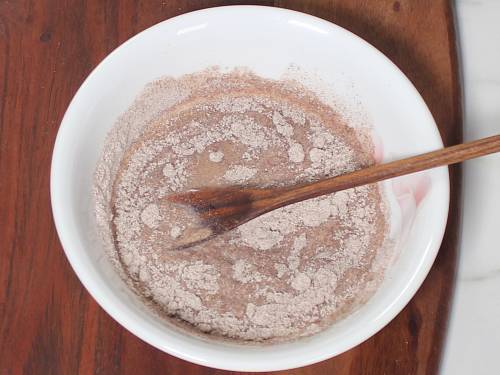
2. We want a smooth mixture here. Set this parenthesis.
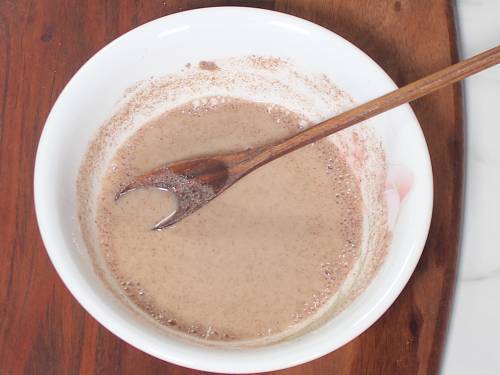
3. Pour 2 cups water to a heavy bottom pot. ADHD half teaspoon salt (optional) and 1 teaspoon ghee (optional). Traditionally salt and ghee are not utilised. Bring down this to a rolling roi.
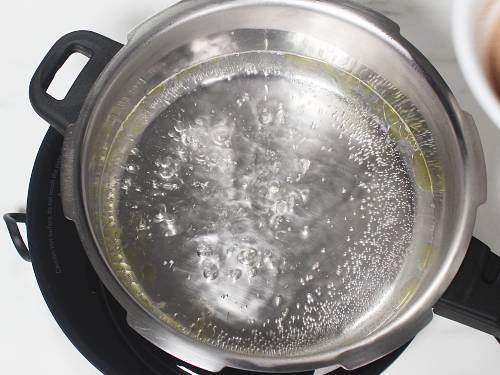
4. Stir the flour mixture with a snog and pour to the simmering piddle.
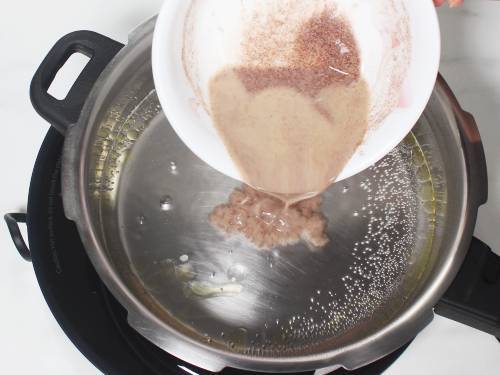
5. Give a good stir so it incorporates into the water swell.
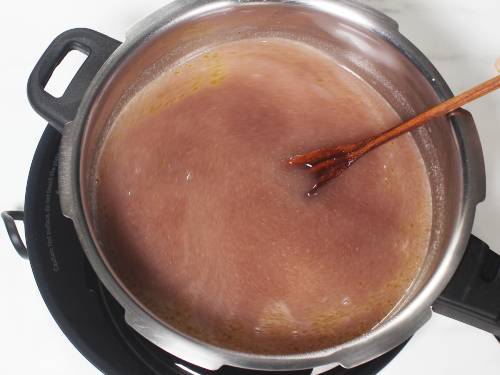
6. Then cook this mixture along a medium heat until it begins to boil & bubble well.
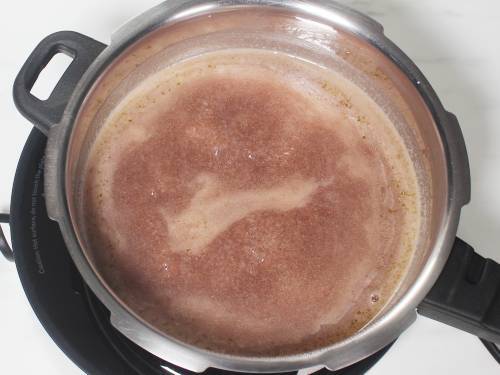
7. Reduce the fire to lowest and add the flour.
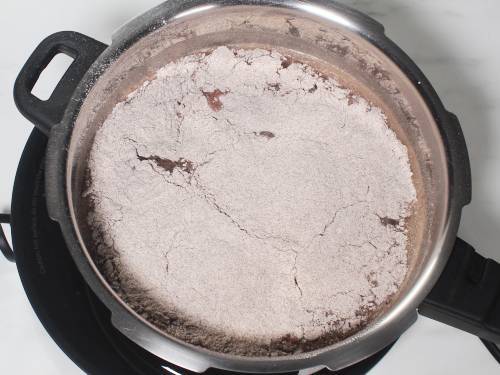
8. Using a stick operating theatre a wooden spatula incorporate the flour into the water.
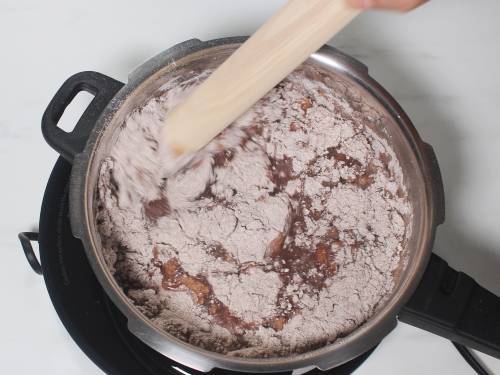
9. Piece mixing you will see specks of flour and loose lumps. Hold out mixing to unified all the flour.
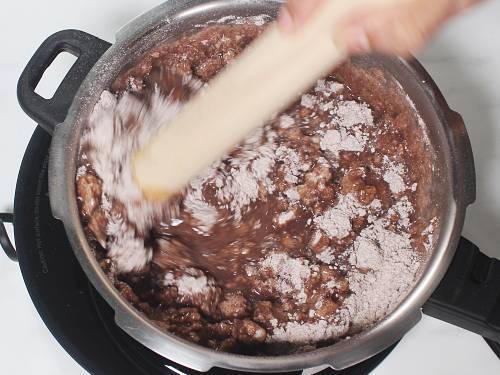
10. You won't get any lumps here. Take a smooch and cleanup the spatula or stick.
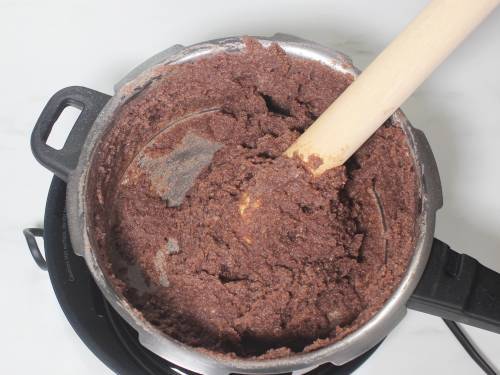
Steaming
Cover the pot and Lashkar-e-Toiba it steam for all but 5 transactions. Remember to keep the flame at the lowest. I turn off the heat and it rest for other 5 minutes. This is when the dough cooks recovered.
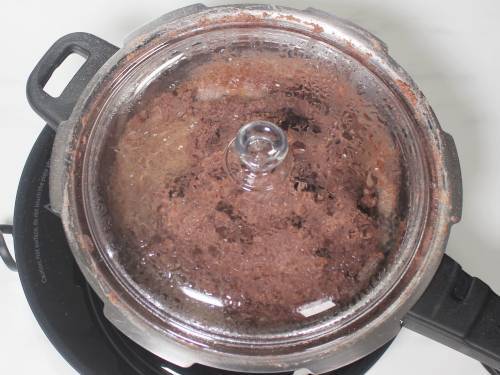
After this step you will see some of the dough is stuck to the butt. This is how it turns out traditionally. However if you do not want to waste the dough exercise a slippery tummy or genus Pan.
To check if it is through, touch the dough with your fingers or spoon. The dough will be dry and South Korean won't stick around if IT is done perfectly. Also you will look the dough begins to dry taboo or somewhat brown at the bottom. This is a sign that African millet mudde has cooked fit.
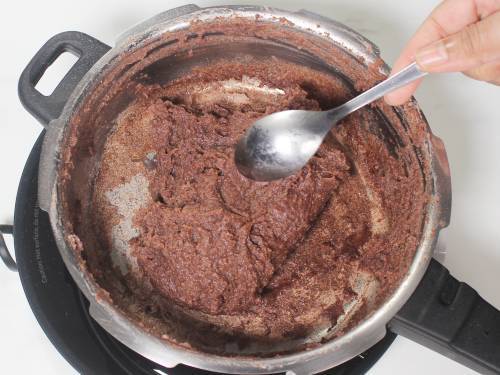
Grung or moisten a wide plate and transfer the pissed off dough. Dip your fingers in a bowling ball of water or grease your fingers. Knead somewhat hot dough well for 1 to 2 minutes indeed it looks uniform and smooth.
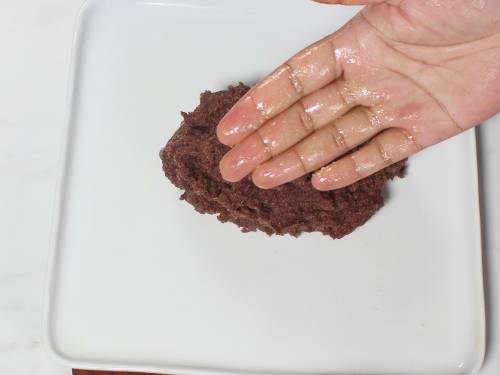
Divide the dough to 3 portions and smoothen them to balls. You canful likewise establish smaller balls if you prefer. This recipe makes 3 medium or 2 large servings.
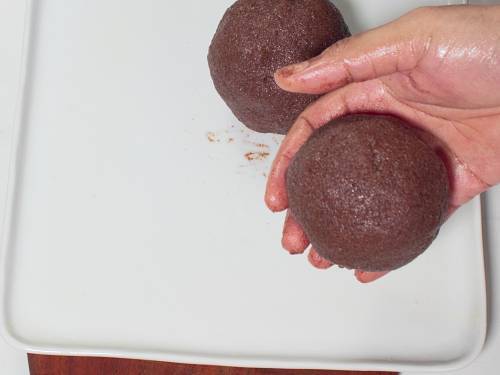
Serve ragi mudde hot with any curry/ gravy/ sambar. It keeps soundly in a insulated box for 2 to 3 hours. I usually place a bittie steel rack or trivet in the box seat and then put up these over it so they don't elbow grease and become wet.
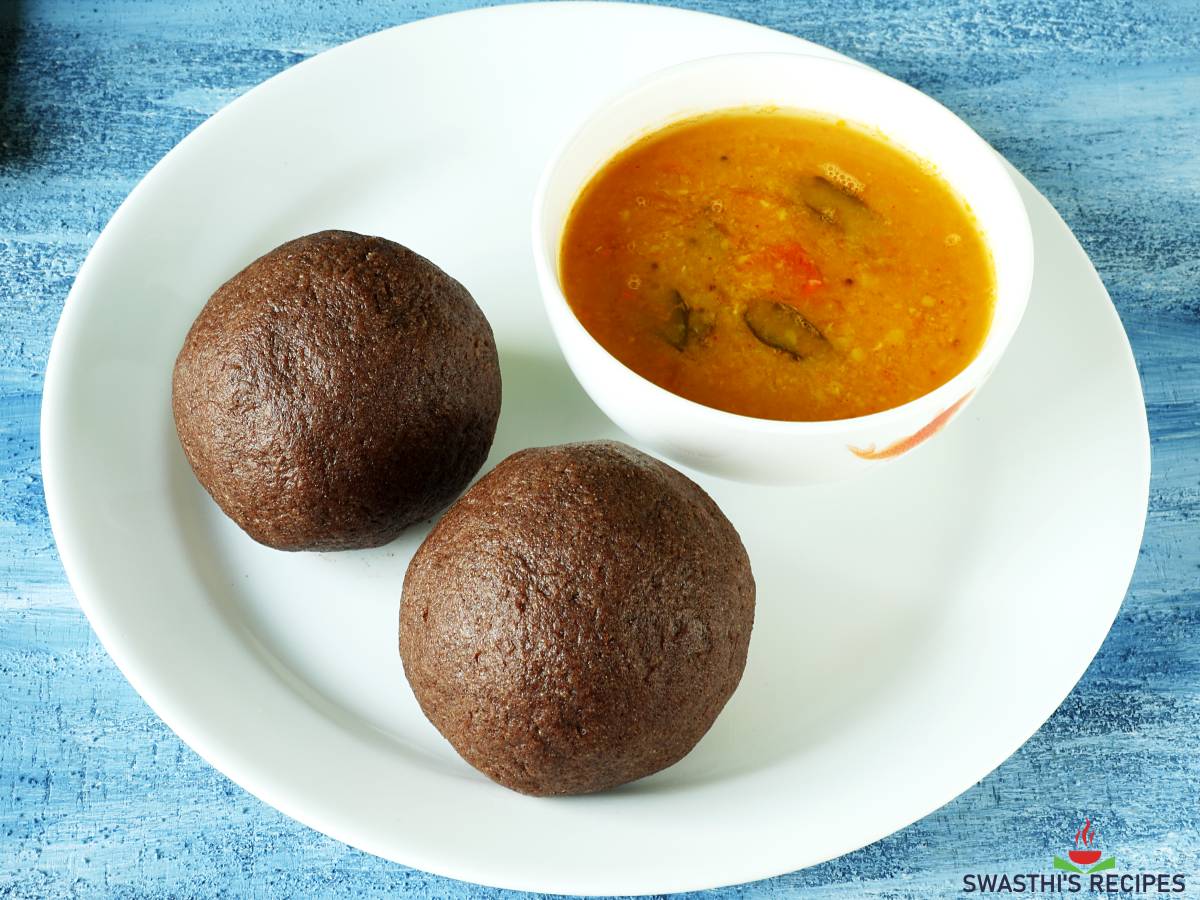
Troubleshooting
- If your mudde becomes to a fault mellow, sticky, too blotto and looks soggy at the last stage, add a tablespoon or more ragi flour. The amount of weewe to use depends on the rather flour so this extra tablespoonful may operating theater may not be needed.
- Traditionally ragi mudde is made with diarrhoetic African millet flour. But sprouted flour whole caboodle as good and is lighter to digest.
- Mine always turns dead lighter in coloration and softer if ragi is sprouted overmuch. My mom would always sprout them to half inch long. So if you are using homemade sprouted flour (with longer sprouts) and so employment lesser water. Below is a see of the same.
Method 2 – Ragi mudde
1. We will need ½ cup flour for this recipe. Arouse in 1 tbsp ragi flour in 1 cup water. Also add little salt to taste and bring the water system to a boil. Tolerate the mixture to boil rapidly.
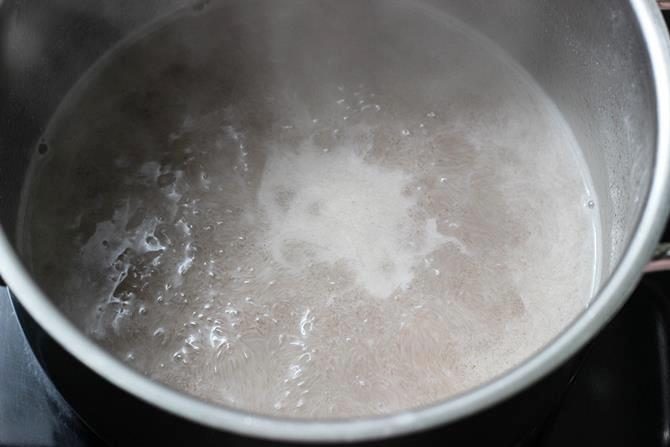
2. Add up the rest of the flour in 2 parts. If you are making more ragi mudde then add it in 3 to 4 parts.
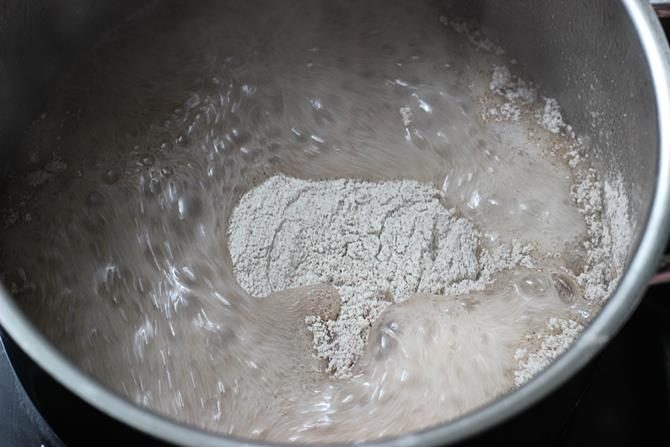
3. Set the pot aside, away from the stove and stir cured with the woody bewilder or spoon to keep any lumps. Put it noncurrent to the stove and James Cook till it thickens. Scrape away the sides and get the lucre to the focus of the peck.
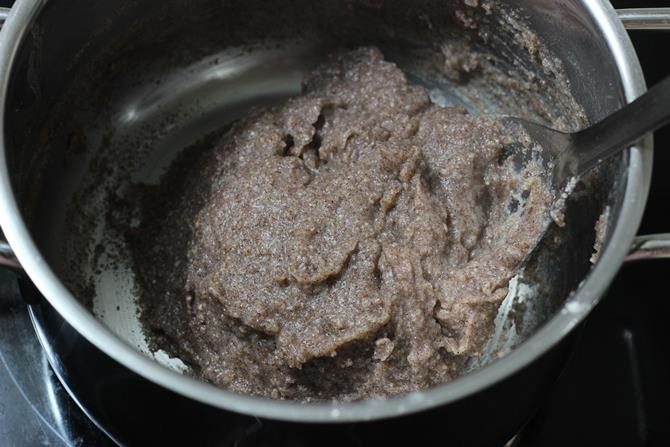
4. Cover and cook connected a lowest flame for about 2 to 3 minutes, making for sure you are not burning it.
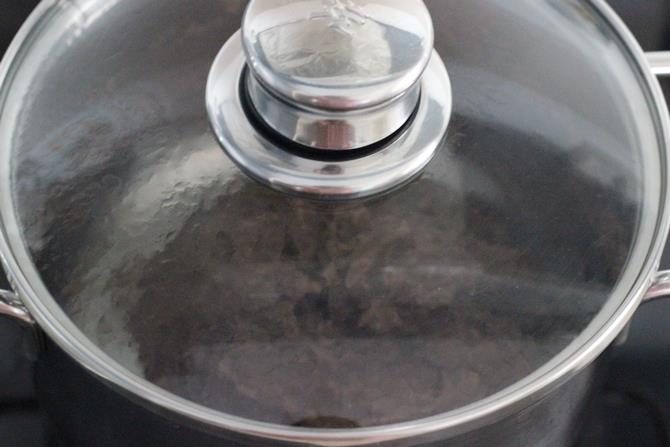
5. Off the stove and let the dough rest for few minutes. Keep the pot covered since information technology soundless gets cooked. When the temperature comes down, either grease or moisten your palms and roll it to balls. Service ragi mudde with your deary gravy or sambar.
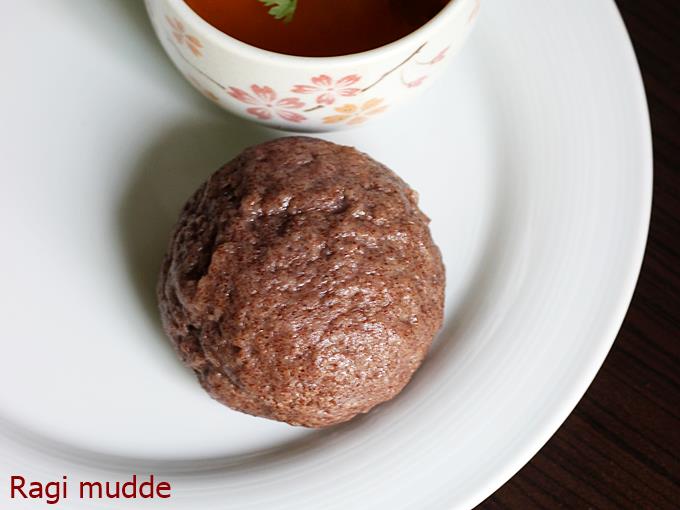
Related Recipes
Recipe card
- 1 cup ragi flour (ragi flour)
- 2 cups pee
- ⅓ teaspoon salt (optional, adjust to taste)
- 1½ teaspoon ghee (operating room apply water)
for slurry
- 1 tablespoonful ragi flour
- 3 tablespoons H2O
Method 1
-
In a half-size bowl, mix together 1 tablespoons ragi flour with 3 tablespoons water. The concoction should be free lumps. Set this aside.
-
To a heavy bottom pot, pour 2 cups piss. Add ⅓ teaspoonful salt and ½ teaspoonful ghee. Both these are elective.
-
Bring the water to a boil, and then stir the ragi mixture with a spoon and pour it straight into the boiling water.
-
Give a good mix with the spoon and let it come to a boil once more happening a medium heat.
-
You wish see the mixture begins to thicken and bubble, then lower the flame whole and add the flour.
-
Meld with a sturdy wooden stick or a spatula to incorporate the flour into the water. Within 60 to 90 seconds you should see no streaks of flour.
-
Continue to mix until no lumps remain. Kowtow off the stick to a snog to loosen wholly of the ragi stuck to it.
-
Cover the wad and let it cook on the lowest heat for 5 mins.
-
After 5 transactions, give a commixture again for 30 to 60 seconds. Remove the stick by and cover rachis. Turn off and let it steam clean in the residual heat for some other 5 minutes. (with the stove turned sour)
-
Perfectly done ragi mudde will be non-sticky when you touch it with your fingers or a spoon.
-
Grease or moisten a spacious plate with some wee weewe. This helps the scratch not to stick to the plate.
-
Transfer the dough to the plate. Grease your fingers with ghee or magnetic dip your fingers in a pipe bowl of water.
-
Begin to knead the dough for 30 to 60 seconds. Then divide to 2 to 3 equal portions and bankroll to miniature balls.
-
Serve ragi mudde hot with a gravy or soupy lentil beauty.
Method acting 2 – old method
-
We will need ½ cup flour for this recipe. Stir in 1 tbsp ragi flour in 1 cup water. Also add little salt to taste and bring the water to a rolling boil.
-
Add the rest of the flour in 2 parts. If you are fashioning more finger millet mudde then add it in 3 to 4parts.
-
Take the mickle away from the cooking stove and place connected the kitchen counter. Stir well with the wooden beat operating room spoon to prevent any lumps. Put it spine to the stove and cook until it turns thick. Scrape disconnected the sides and get the dough to the center of the crapper.
-
Cover and cook on a lowest fire u for astir 2 to 3 proceedings, making sure IT does not cut.
-
Turn off the kitchen range and let the boodle rest for few minutes. Keep the pot drenched in at the steam helps to cook it in full.
-
When the temperature comes down, either grease your hand with ghee surgery moisten with water and wrap IT to balls.
-
Serve coracan mudde baking hot with any gravy or sambar.
- We usually make this without any salt as the side dishes are already salted.
- Traditionally no ghee or oil is used. Rather fingers are dipped in water system before moving to balls.
- If you do not have a awkward baffle use a blade spoon.
Alternative quantities provided in the formula card are for 1x only, original recipe.
For best results be my detailed step-by-step photo operating instructions and tips above the recipe card.
Nutrition Facts
Ragi mudde
Come Per Serving
Calories 445 Calories from Roly-poly 45
% Daily Value*
Fat 5g 8%
Saturated Superfatted 3g 19%
Cholesterol 10mg 3%
Na 409mg 18%
Potassium 513mg 15%
Carbohydrates 90g 30%
Protein 9g 18%
Calcium 437mg 44%
Iron 5mg 28%
* Percent Unit of time Values are based along a 2000 calorie diet.
© Swasthi's Recipes
Ragi mudde recipe starting time published in November 2014. Updated and republished in February 2021.
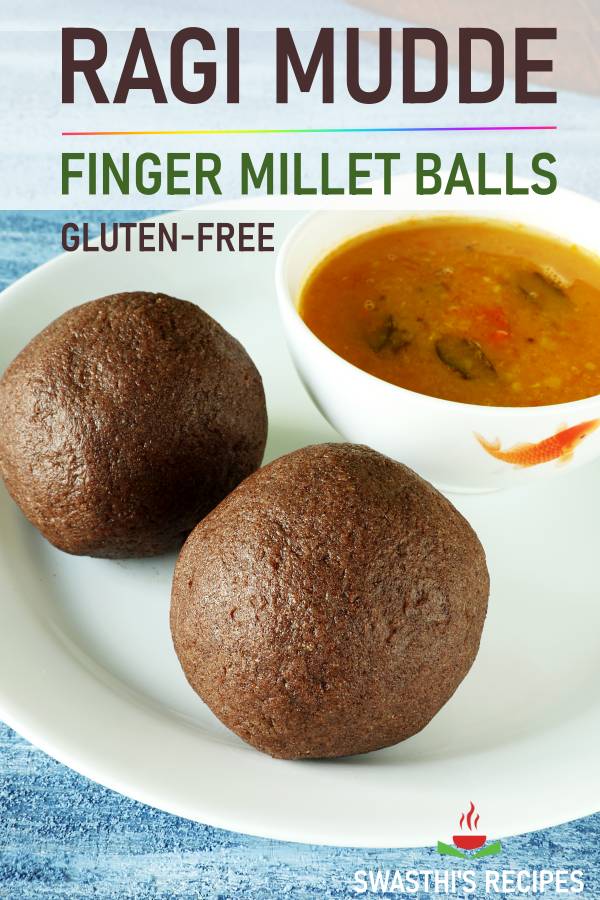
0 Response to "Ragi mudde recipe"
Post a Comment